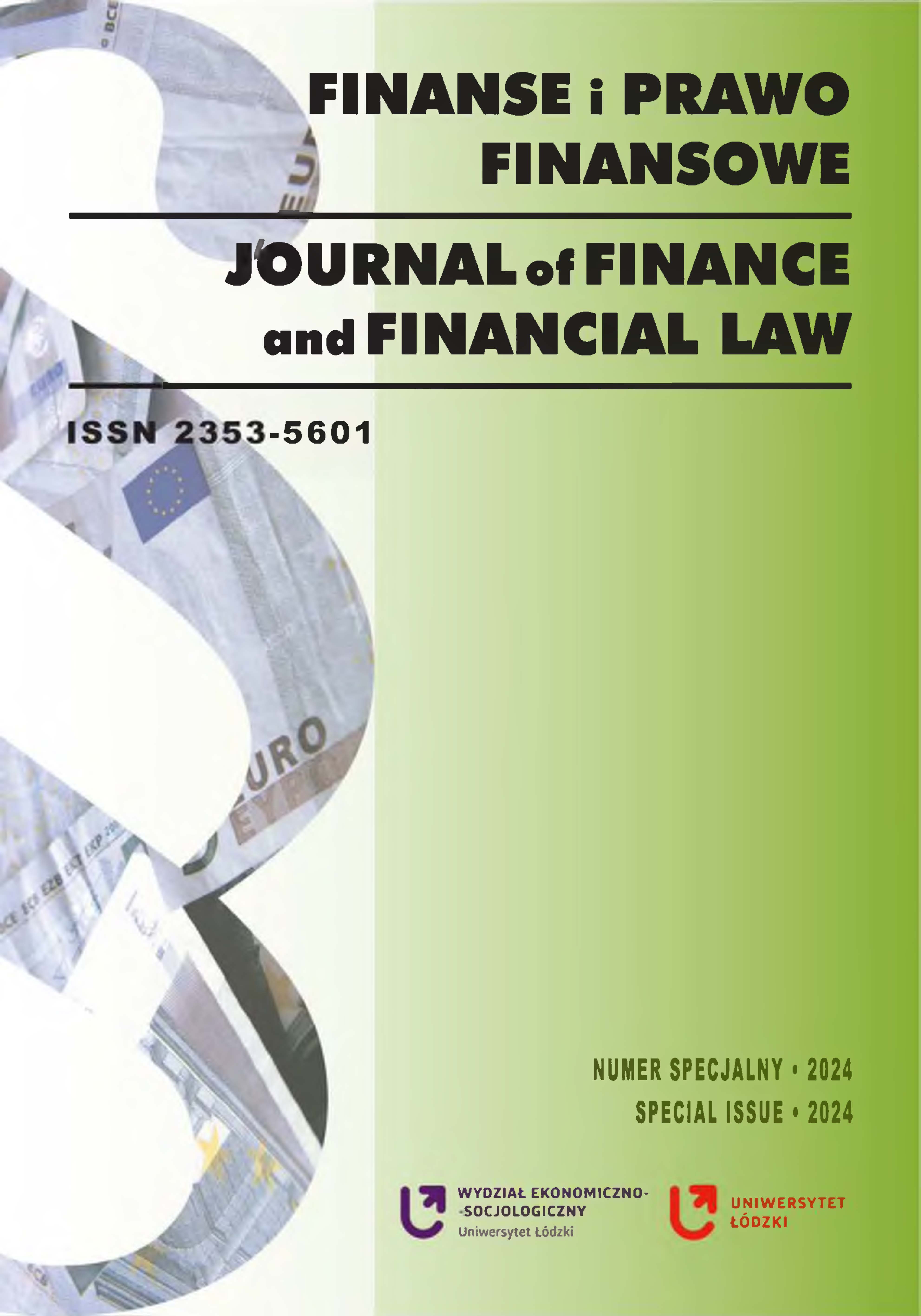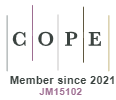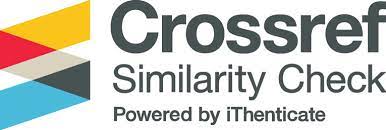Tail Risks Across Investment Funds
DOI:
https://doi.org/10.18778/2391-6478.S1.2024.05Keywords:
Tail Risk, Systematic Risk, Idiosyncratic Risk, Coskewness, Cokurtosis, Copula, Tail Dependence, ETFs, Closed-end Funds, Mutual Funds, Hedge Funds, CompensationAbstract
The purpose of the article. Managed portfolios are subject to tail risks, which can be either index level (systematic) or fund-specific. Examples of fund-specific extreme events include those due to big bets or fraud. This paper studies the two components in relation to compensation structure in managed portfolios.
Methodology. A novel methodology is developed to decompose return skewness and kurtosis into various systematic and idiosyncratic components and applied it to the returns of different fund types to assess the significance of these sources. In addition, a simple model generates fund-specific tail risk and its asymmetric dependence on the market, and makes predictions for where such risks should be concentrated. The model predicts that systematic tail risks increase with an increased weight on systematic returns in compensation and idiosyncratic tail risks increase with the degree of convexity in contracts.
Results of the research. The model predictions are supported with empirical results. Hedge funds are subject to higher idiosyncratic tail risks and Exchange Traded Funds exhibit higher systematic tail risks. In skewness and kurtosis decompositions, the results indicate that coskewness is an important source for fund skewness, but fund kurtosis is driven by cokurtosis, as well as volatility comovement and residual kurtosis, with the importance of these components varying across fund types. Investors are subject to different sources of skewness and fat tail risks through delegated investments. Volatility based tail risk hedging is not effective for all fund styles and types.
Downloads
References
Aas, K. and Haff, I. H. (2006). The Generalized Hyperbolic Skew Student’s t-Distribution, Journal of Financial Econometrics, 4, pp. 275-309.
Google Scholar
DOI: https://doi.org/10.1093/jjfinec/nbj006
Ackermann, C., McEnally, R., Ravenscraft, D. (1999). The performance of hedge funds: Risk, return, and incentives, Journal of Finance, 54, pp. 833-874.
Google Scholar
DOI: https://doi.org/10.1111/0022-1082.00129
Agarwal, V. and Naik, N. Y. (2004). Risks and portfolio decisions involving hedge funds, Review of Financial Studies, 17, pp. 63-98.
Google Scholar
DOI: https://doi.org/10.1093/rfs/hhg044
Aggarwal, R. and Jorion, P. (2010). The performance of emerging hedge funds and managers, Journal of Financial Economics.
Google Scholar
DOI: https://doi.org/10.1016/j.jfineco.2009.12.010
Ang, A. and Chen, J. (2002). Asymmetric correlations of equity portfolios, Journal of Financial Economics, 63, pp. 443-494.
Google Scholar
DOI: https://doi.org/10.1016/S0304-405X(02)00068-5
Ang, A., Hodrick, R.J., Xing, Y. and Zhang, X. (2006). The cross-section of volatility and expected returns, Journal of Finance, 51, pp. 259-299.
Google Scholar
DOI: https://doi.org/10.1111/j.1540-6261.2006.00836.x
Ang, A., Hodrick, R.J., Xing, Y. and Zhang, X. (2009). High idiosyncratic volatility and low returns: International and further U.S. evidence, Journal of Financial Economics, 91, pp. 1-23.
Google Scholar
DOI: https://doi.org/10.1016/j.jfineco.2007.12.005
Aragon, G. O. (2007). Share restrictions and asset pricing: Evidence from the hedge fund industry, Journal of Financial Economics, 83, pp. 33-58.
Google Scholar
DOI: https://doi.org/10.1016/j.jfineco.2005.11.001
Asness, C., Krail, R. and Liew, J. (2001). Do hedge funds hedge? The Journal of Portfolio Management, 28, pp. 6-19.
Google Scholar
DOI: https://doi.org/10.3905/jpm.2001.319819
Barberis, N. and Huang, M. (2008). Stocks as lotteries: The implications of probability weighting for security prices, American Economic Review, 98, pp. 2066-2100.
Google Scholar
DOI: https://doi.org/10.1257/aer.98.5.2066
Bekaert, G. and Wu, G. (2000), Asymmetric volatility and risk in equity markets, Review of Financial Studies, 13, pp. 1–42.
Google Scholar
DOI: https://doi.org/10.1093/rfs/13.1.1
Blake, D. and Timmerman, A. (1998). The birth and death processes of mutual funds, European Finance Review, 2, pp. 57-77.
Google Scholar
DOI: https://doi.org/10.1023/A:1009729630606
Boguth, O. (2010). Stochastic idiosyncratic volatility, portfolio constraints, and the cross-section of stock returns, Working paper, University of British Columbia.
Google Scholar
Boyer, B., Mitton, T., and Vorkink, K. (2010). Expected Idiosyncratic Skewness, Review of Financial Studies, 23, pp. 170-202.
Google Scholar
DOI: https://doi.org/10.1093/rfs/hhp041
Brennan, M.J. (1993). Agency and asset pricing, Working paper, University of California at Los Angeles.
Google Scholar
Brown, S. J., and Goetzmann, W. N. (1995). Performance persistence, Journal of Finance, 50, pp. 679-698.
Google Scholar
DOI: https://doi.org/10.1111/j.1540-6261.1995.tb04800.x
Brown, S. J.,. Goetzmann, W. N., Ibbotson, R. G. (1999). Offshore hedge funds: Survival and performance, Journal of Business, 72, pp. 91-117.
Google Scholar
DOI: https://doi.org/10.1086/209603
Brown, K. C., Harlow, W. V. and Starks, L. T. (1996). Of tournaments and temptations: An analysis of managerial incentives in the mutual fund industry, Journal of Finance, 51, pp. 85-110.
Google Scholar
DOI: https://doi.org/10.1111/j.1540-6261.1996.tb05203.x
Busse, J. A. (1999). Volatility timing in mutual funds: Evidence from daily returns, Review of Financial Studies, 12, pp. 1009-1041.
Google Scholar
DOI: https://doi.org/10.1093/rfs/12.5.1009
Carhart, M. M. (1997). On persistence in mutual fund performance, Journal of Finance, 52, pp. 57-82.
Google Scholar
DOI: https://doi.org/10.1111/j.1540-6261.1997.tb03808.x
Chabi-Yo, F. (2009). Explaining the idiosyncratic volatility puzzle using stochastic discount factors, Journal of Banking and Finance.
Google Scholar
Chabi-Yo, F. and Yang, J. (2009). Default risk, idiosyncratic coskewness and equity returns, Working paper, Ohio State University.
Google Scholar
DOI: https://doi.org/10.2139/ssrn.1572661
Cherkes, M., Sagi, J., and Stanton, R. (2009). A liquidity-based theory of closed-end funds, Review of Financial Studies, 22, pp. 257-297.
Google Scholar
DOI: https://doi.org/10.1093/rfs/hhn028
Chevalier, J. and Ellison, G. (1997). Risk taking by mutual funds as a response to incentives, Journal of Political Economy, 105, pp. 1167-1200.
Google Scholar
DOI: https://doi.org/10.1086/516389
Cvitanić, J., Polimenis, V., and Zapatero F. (2008). Optimal portfolio allocation with higher moments, Annals of Finance, 4, pp. 1-28.
Google Scholar
DOI: https://doi.org/10.1007/s10436-007-0071-5
Daal, E. and Yu, J.-S. (2007). Daily asset return movements and value-at-risk under alternative classes of model specifications, Working paper, Florida Institute of Technology.
Google Scholar
Daniel, G., Sornette, D. and Wohrmann, P. (2009). Look-ahead benchmark bias in portfolio performance evaluation, Journal of Portfolio Management, 36, pp. 121-130.
Google Scholar
DOI: https://doi.org/10.3905/JPM.2009.36.1.121
Dittmar, R. F. (2002). Nonlinear pricing kernels, kurtosis preference, and evidence from the cross section of equity returns, Journal of Finance, 57, pp. 369-403.
Google Scholar
DOI: https://doi.org/10.1111/1540-6261.00425
Dokov, S., Stoyanov, S. V., and Rachev, S. T. (2007). Computing VaR and AVaR of skewed-t distribution, Working paper, University of California Santa Barbara.
Google Scholar
Elton, E. J., Gruber, M. J. and. Blake, C. R. (2003). Incentive fees and mutual funds, Journal of Finance, 58, pp. 779-804.
Google Scholar
DOI: https://doi.org/10.1111/1540-6261.00545
Engle, R. and Mistry, A. (2007). Priced risk and asymmetric volatility in the cross-section of skewness, Working paper, New York University.
Google Scholar
Evans, R. B. (2010). Mutual fund incubation, Journal of Finance.
Google Scholar
DOI: https://doi.org/10.1111/j.1540-6261.2010.01579.x
Fama, E. F., (1965). The behavior of stock-market prices, Journal of Business, 38, pp. 34-105.
Google Scholar
DOI: https://doi.org/10.1086/294743
Frey, R.,. McNeil, A. J. and. Nyfeler, M. A. (2001). Copulas and credit models, RISK, pp. 111-113.
Google Scholar
Fung, W. and Hsieh D. A. (1997). Empirical characteristics of dynamic trading strategies: The case of hedge funds, Review of Financial Studies, 10, pp. 275-302.
Google Scholar
DOI: https://doi.org/10.1093/rfs/10.2.275
Fung, W. and Hsieh, D.A. (2001). The risk in hedge fund strategies: Theory and evidence from trend followers, Review of Financial Studies, 14, pp. 313-341.
Google Scholar
DOI: https://doi.org/10.1093/rfs/14.2.313
Getmansky, M., Lo, A. W., and Makarov, I. (2004). An econometric model of serial correlation and illiquidity in hedge fund returns, Journal of Financial Economics, 74, pp. 529-609.
Google Scholar
DOI: https://doi.org/10.1016/j.jfineco.2004.04.001
Goetzmann, W., Ingersoll, J., Spiegel, M., and Welch, I. (2007). Portfolio performance manipulation and manipulation-proof performance measures, Review of Financial Studies, 20, pp. 1503-1546.
Google Scholar
DOI: https://doi.org/10.1093/rfs/hhm025
Grinblatt, M. and Titman S. (1994). A study of monthly mutual fund returns and performance evaluation techniques, Journal of Financial and Quantitative Analysis, 29, pp. 419-444.
Google Scholar
DOI: https://doi.org/10.2307/2331338
Hamao, Y., Masulis, R. W. and Ng, V. (1990). Correlations in price changes and volatility across international stock markets, Review of Financial Studies, 3, pp. 281-307.
Google Scholar
DOI: https://doi.org/10.1093/rfs/3.2.281
Hansen, L. P. (1982). Large sample properties of the generalized method of moments estimators, Econometrica ,50, pp. 1029-1054.
Google Scholar
DOI: https://doi.org/10.2307/1912775
Hansen, B. E., (1994). Autoregressive conditional density estimation, International Economic Review, 35, pp. 705-730.
Google Scholar
DOI: https://doi.org/10.2307/2527081
Harvey, C. R., Liechty, M., Liechty, J., and Müller, P. (2010). Portfolio selection with higher moments, Quantitative Finance, 10, pp. 469-485.
Google Scholar
DOI: https://doi.org/10.1080/14697681003756877
Harvey, C. R., and Siddique, A. (1999). Autoregressive conditional skewness, Journal of Financial and Quantitative Analysis, 34, pp. 465-487.
Google Scholar
DOI: https://doi.org/10.2307/2676230
Harvey, C. R., and Siddique, A. (2000). Conditional skewness in asset pricing tests, Journal of Finance, 55, pp. 1263-1295.
Google Scholar
DOI: https://doi.org/10.1111/0022-1082.00247
Hemmer, T., Kim, O. and Verrecchia, R. E. (2000). Introducing convexity in to optimal compensation contracts, Journal of Accounting and Economics, 28, pp. 307-327.
Google Scholar
DOI: https://doi.org/10.1016/S0165-4101(00)00008-2
Holmstrom, B. (1979). Moral hazard and observability, Bell Journal of Economics, 10, pp. 74-91.
Google Scholar
DOI: https://doi.org/10.2307/3003320
Hunter, D., Kandel, E., Kandel, S. and Wermers, R. (2010). Endogenous benchmarks, Working paper, University of Maryland.
Google Scholar
DOI: https://doi.org/10.2139/ssrn.1364505
Jagannathan, R., Malakhov, A. and Novikov, D. (2010). Do hot hands exist among hedge fund managers?. An empirical evaluation, Journal of Finance, 65, pp. 217-255.
Google Scholar
DOI: https://doi.org/10.1111/j.1540-6261.2009.01528.x
Jondeau, E. and Rockinger, M. (2003). Conditional volatility, skewness, and kurtosis: existence, persistence, and comovements, Journal of Economic Dynamics and Control, 27, pp. 1699-1737.
Google Scholar
DOI: https://doi.org/10.1016/S0165-1889(02)00079-9
Kan, R. and Zhou, G (1999). A Critique of the Stochastic Discount Factor Methodology. Journal of Finance, 54, pp. 1221-1248.
Google Scholar
DOI: https://doi.org/10.1111/0022-1082.00145
Kane, A. (1982). Skewness preference and portfolio choice, Journal of Financial and Quantitative Analysis, 17, pp. 15-25.
Google Scholar
DOI: https://doi.org/10.2307/2330926
Kempf, A., and Ruenzi, S. (2008). Tournaments in mutual-fund families, Review of Financial Studies, 21, pp. 1013-1036.
Google Scholar
DOI: https://doi.org/10.1093/rfs/hhm057
Kim, M. S. (2010). Changes in Mutual Fund Flows and Managerial Incentives, Working paper, University of New South Wales.
Google Scholar
DOI: https://doi.org/10.2139/ssrn.1517572
Kraus, A. and. Litzenberger, R. H. (1976). Skewness preference and the valuation of risk assets, Journal of Finance, 31, pp. 1085-1100.
Google Scholar
DOI: https://doi.org/10.1111/j.1540-6261.1976.tb01961.x
Lee, C. M. C., Shleifer, A., Thaler, R. H. (1991), Investor sentiment and the closed-end fund puzzle, Journal of Finance, 46, pp. 75-109.
Google Scholar
DOI: https://doi.org/10.1111/j.1540-6261.1991.tb03746.x
Leland, H. E. (1999). Beyond mean-variance: Risk and performance measurement in a nonsymmetrical world, Financial Analysts Journal, pp. 27-36.
Google Scholar
DOI: https://doi.org/10.2469/faj.v55.n1.2239
Lo, A. W. (2002). The statistics of Sharpe ratios, Financial Analysts Journal, 58, pp. 36-50.
Google Scholar
DOI: https://doi.org/10.2469/faj.v58.n4.2453
Longin, F., and Solnik, B. (2001). Extreme correlation of international equity markets, Journal of Finance, 56, pp. 649-676.
Google Scholar
DOI: https://doi.org/10.1111/0022-1082.00340
Mandelbrot, B. (1963). The variation of certain speculative prices, Journal of Business,36, pp. 394-419.
Google Scholar
DOI: https://doi.org/10.1086/294632
McNeil, A. J., Frey, R. and Embrechts, P. (2005). Quantitative Risk Management: Concepts, Techniques and Tools, Princeton University Press.
Google Scholar
Merton, R. C., and Henriksson, R. D. (1981). On market timing and investment performance II: Statistical procedures for evaluating forecasting skills, Journal of Business, 54, pp. 513-534.
Google Scholar
DOI: https://doi.org/10.1086/296144
Mitton, T. and Vorkink, K. (2007). Equilibrium under diversification and the preference for skewness, Review of Financial Studies, 20, pp. 1255-1288.
Google Scholar
DOI: https://doi.org/10.1093/revfin/hhm011
Moreno, D. and Rodríguez, R. (2009). The value of coskewness in mutual fund performance evaluation, Journal of Banking and Finance, 33, pp, 1664-1676.
Google Scholar
DOI: https://doi.org/10.1016/j.jbankfin.2009.03.015
Murphy, K. J. (1999). Executive Compensation, Handbook of Labor Economics, Vol. III, Orley Ashenfelter and David Card, editors. North Holland.
Google Scholar
Patton, A. J. (2004). On the out-of-sample importance of skewness and asymmetric dependence for asset allocation, Journal of Financial Econometrics, 2(1), pp. 130-168.
Google Scholar
DOI: https://doi.org/10.1093/jjfinec/nbh006
Pontiff, J. (1997). Excess volatility and closed-end funds, American Economic Review, 87, pp. 155-169.
Google Scholar
Ramakrishnan, R. T. S., and Thakor, A. V. (1984). The valuation of assets under moral hazard, Journal of Finance, 39, pp. 229-238.
Google Scholar
DOI: https://doi.org/10.1111/j.1540-6261.1984.tb03870.x
Samuelson, P. A. (1970). The fundamental approximation theorem of portfolio analysis in terms of means, variances and higher moments. The Review of Economic Studies, 37, pp. 537-542.
Google Scholar
DOI: https://doi.org/10.2307/2296483
Simonson, D. (1972). The speculative behavior of mutual funds, Journal of Finance, 27, pp. 381-391.
Google Scholar
DOI: https://doi.org/10.1111/j.1540-6261.1972.tb00967.x
Sirri, E. R., and Tufano, P. (1998), Costly search and mutual fund flows, Journal of Finance, 53, pp. 1589-1622.
Google Scholar
DOI: https://doi.org/10.1111/0022-1082.00066
Starks, L. T. (1987). Performance incentive fees: An agency theoretic approach, Journal of Financial and Quantitative Analysis, 22, pp. 17-32.
Google Scholar
DOI: https://doi.org/10.2307/2330867
Susmel, R. and Engle, R. F. (1994). Hourly volatility spillovers between international equity markets, Journal of International Money and Finance, 13, pp. 3-25.
Google Scholar
DOI: https://doi.org/10.1016/0261-5606(94)90021-3
Swaminathan, B. (1996). Time-varying expected small firm returns and closed-end fund discounts, Review of Financial Studies, 9, pp. 845-887.
Google Scholar
DOI: https://doi.org/10.1093/rfs/9.3.845
Taleb, N. N. (2004). Bleed or blowup: what does empirical psychology tell us about the preference for negative skewness?, Journal of Behavioral Finance, 5.
Google Scholar
DOI: https://doi.org/10.1207/s15427579jpfm0501_1
Ter Horst, J. R. and Verbeek, M. (2007). Fund liquidation, self-selection, and look-ahead bias in the hedge fund industry, Review of Finance, 11, pp. 605-632.
Google Scholar
DOI: https://doi.org/10.1093/rof/rfm012
Theodossiou, P. (1998). Financial data and the skewed generalized T distribution, Management Science , 44, pp. 1650-1661.
Google Scholar
DOI: https://doi.org/10.1287/mnsc.44.12.1650
Thompson, R. (1978). The information content of discounts and premiums on closed-end fund shares, Journal of Financial Economics, 6, pp. 151-186.
Google Scholar
DOI: https://doi.org/10.1016/0304-405X(78)90028-4
Titman, S., and Tiu, C. (2010). Do the best hedge funds hedge?, Review of Studies, 24, pp. 123-168.
Google Scholar
DOI: https://doi.org/10.1093/rfs/hhq105
Treynor, J. and Mazuy, K. (1966). Can mutual funds outguess the market?, Harvard Business Review, 44, pp. 131-136.
Google Scholar
(www1) https://www.hfr.com/ [Accessed: 08.06.2009].
Google Scholar
(www2) https://mba.tuck.dartmouth.edu/pages/faculty/ken.french/data_library.html [Accessed: 08.06.2009].
Google Scholar
(www3) https://people.duke.edu/~dah7/DataLibrary/TF-FAC.xls [Accessed: 08.06.2009].
Google Scholar
Downloads
Published
How to Cite
Issue
Section
License

This work is licensed under a Creative Commons Attribution-NonCommercial-NoDerivatives 4.0 International License.














